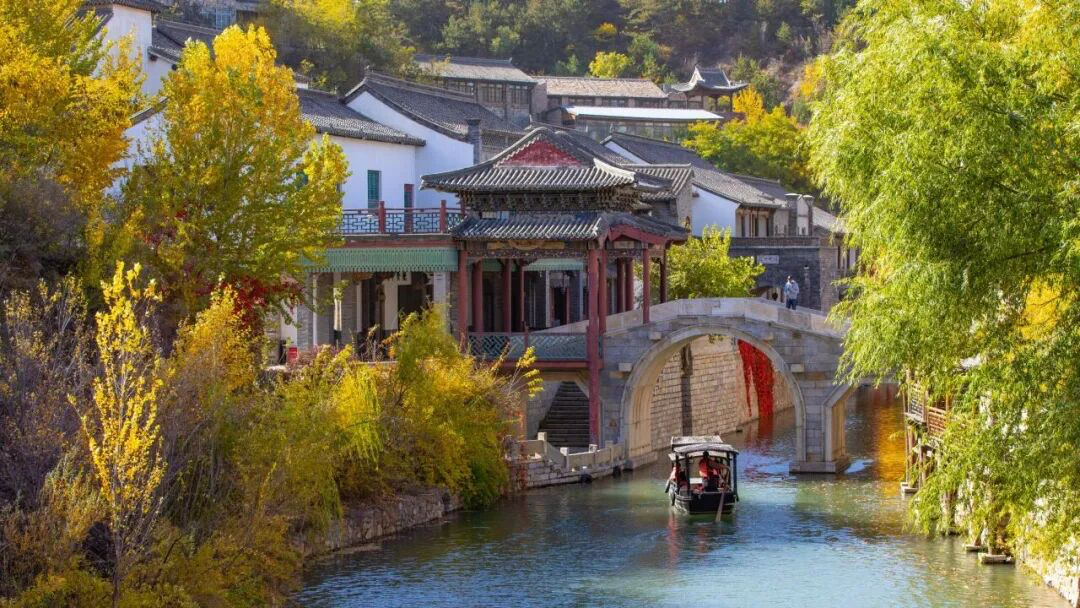This year marks the centenary of the founding of the Communist Party of China. The Beijing Municipal Bureau of Culture and Tourism has officially launched 10 boutique red tourism routes for citizens to explore red tourism resources and relive red memories. This article recommends the journey of the birthplace of "the New Culture and the May Fourth Movement": Peking University Honglou (the Red Building), Former Residence of Cai Yuanpei, and the Former Site of Burning Zhao Jialou in Beizongbu Hutong.
As the birthplace of the May Fourth Movement, the Red Building of Peking University was once the main front for the dissemination of Marxism in early China, leaving many "red stories". The Former Residence of Cai Yuanpei introduces Mr. Cai’s life story in detail, displays many precious photos, many works of Mr. Cai and plenty of related works that commemorates him. The Former Site of Burning Zhao Jialou in Beizongbu Hutong is a patriotic education base.
Peking University Honglou (the Red Building)

On the May Fourth Street in Beijing, there is an old-fashioned building with red bricks and tiles - "Peking University Honglou (the Red Building)", which is now the memorial hall of Beijing New Culture Movement. The former site of the early revolutionary activities of the Communist Party of China in Beijing, represented by this building, witnessed the glorious history and immortal achievements of the early Chinese Communists.

As the birthplace of the May Fourth Movement, Peking University Red Building was once the main front for spreading Marxism in early China, as well as the birthplace of the first party organization in Beijing, leaving many "red stories". Mr. Cai Yuanpei once worked here; Mr. Li Dazhao was the curator of Peking University Library; Mr. Chen Duxiu edited New Youth here, and Mr. Lu Xun used to teach here...

The New Culture Movement broke out in 1919 as an ideological and cultural innovation and literary revolutionary movement against tradition, Confucianism and classical Chinese. The movement promoted the development of modern science in China and laid the ideological foundation for the spread of Marxism in China and the outbreak of the May Fourth Patriotic Movement. In 1961, Peking University Honglou (the Red Building) was announced as the first batch of national key cultural relics protection units, and it was also the municipal patriotism education base in Beijing.
Address: No.29 Wusi Street, Dongcheng District, Beijing
Former Residence of Cai Yuanpei

Mr Cai Yuanpei's former residence in Beijing is a courtyard house in Dongtangzi Hutong, Dongcheng District, with a building area of about 368 square meters. From 1917 to 1920, Mr. Cai lived here. As an academic leader, he led a very frugal life, and did not own a house property in Beijing, which means he only rented it here. At that time, Mr. Cai was the principal of Peking University. Actually, Mr. Cai rented in both Xicheng and Xuanwu districts in Beijing. The reason why Dongcheng District was finally designated as the "Former Residence of Cai Yuanpei" was mainly because it was one of the birthplaces of the May Fourth Movement.
At the entrance of the Former Residence of Cai Yuanpei, there is a plaque with the words of Dongcheng District Patriotism Education Base and a stone tablet of "Former Residence of Cai Yuanpei, Beijing Cultural Relics Protection Unit".
There is only one tour route, along the corridor on the right hand side. After the visit, you need to return by the original road. The promenade leads to the exhibition of Cai Yuanpei's former residence. The exhibition of Mr. Cai's life is in the big room at the left hand end of the promenade. There are precious pictures and notes on the wall, which introduce Mr. Cai's life story in detail. There are also many works by Mr. Cai and related works commemorating him in the exhibition table.

When you go out of the big room, you will see Mr. Cai's study and bedroom at that time. Both rooms are locked, but you can clearly see the furnishings inside through the window. The bookshelves and chairs in the study, pens, paper, inkstones and typewriters on the desk, the bed, wardrobe, dressing mirror, rattan chair, the coat hanging on the hanger, and the white towel on the towel rack in the bedroom restored the details of Mr. Cai's residence at that time. Outside the bedroom door is the end of the tour route. There is a white bust sculpture of Mr. Cai, with a pot of chrysanthemums in front of the sculpture surrounded by green plants, and a couplet behind the sculpture: "The academic leader, the model of the world".

Address: No.75 Dongtangzi Hutong, Dongcheng District, Beijing
Former Site of Burning Zhao Jialou in Beizongbu Hutong

Zhao Jialou Hotel, located at No.1 Qianzhaojialou Hutong, Dongcheng District, is a pink five-story building. The wall at the entrance of the hotel is inlaid with a relief of students' group images, and a red sign reads: The Former Site of Burning Zhao Jialou in the May Fourth Movement. More than 100 years ago, it was the residence of the Foreign Minister Cao Rulin. Because of the diplomatic failure of the Beiyang government at the Paris Peace Conference, angry patriotic students marched all the way from Tiananmen Square, and fired Zhao Jialou, causing the famous incident in modern Chinese history.
In May 1984, to commemorate the 65th anniversary of the May Fourth Movement, the nameplate "The Former Site of Burning Zhao Jialou in the May Fourth Movement" was inlaid on the wall of the East Courtyard at No.1 Zhaojialou Hutong. On May 1, 2002, the Zhao Jialou site became a patriotic education base.
Address: No.1 Qianzhaojialou Hutong, Dongcheng District, Beijing



